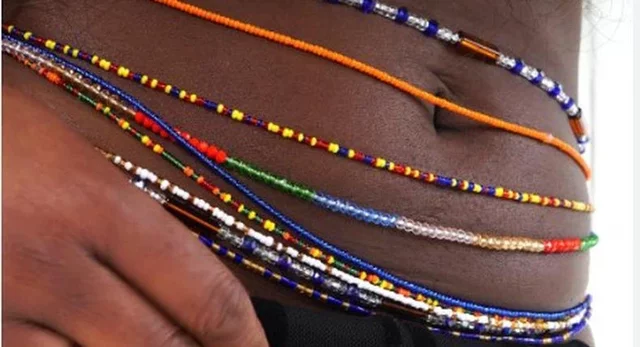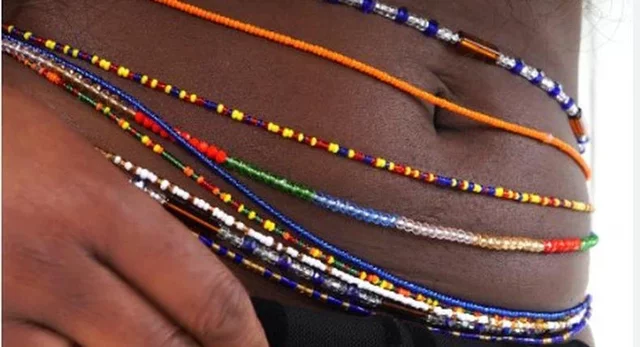Although waist beads are frequently worn now for enjoyment or to improve beauty, their genuine historical beginnings reflect a deeper and wider spectrum of meanings.
Waist beads had significant historical significance in some Ghanaian tribes, such as the Akan and Krobo, that went beyond their contemporary uses.
Contrary to popular belief, these beads were originally created for a number of significant purposes, not just for their sexual appeal and body curves.
Before measuring scales were common, ancient civilizations used waist beads as a practical means to determine a child’s height and weight.
Waist beads were worn around the wrists and waists of infants and young children. The beads gradually tighten as the child grows, representing the child’s weight gain and physical development.
It was revealed in an informative interview on fit beads with a talented bead maker that older beads were once thought to be more valuable, so people would buy them at a discount to keep over time before later selling them at a higher price to make a profit.
The historical significance of waist beads’ involvement with mourning customs cannot be overstated. For times of sadness, particular bead varieties were kept, and some were even buried alongside loved ones. These beads acted as moving representations of memory and the continuation of relationships in the afterlife.
The justifications for wearing waist beads have evolved over time and will do so going forward. Culture is dynamic, and as people change, so will the world around them.











.jpg)
0 Comments